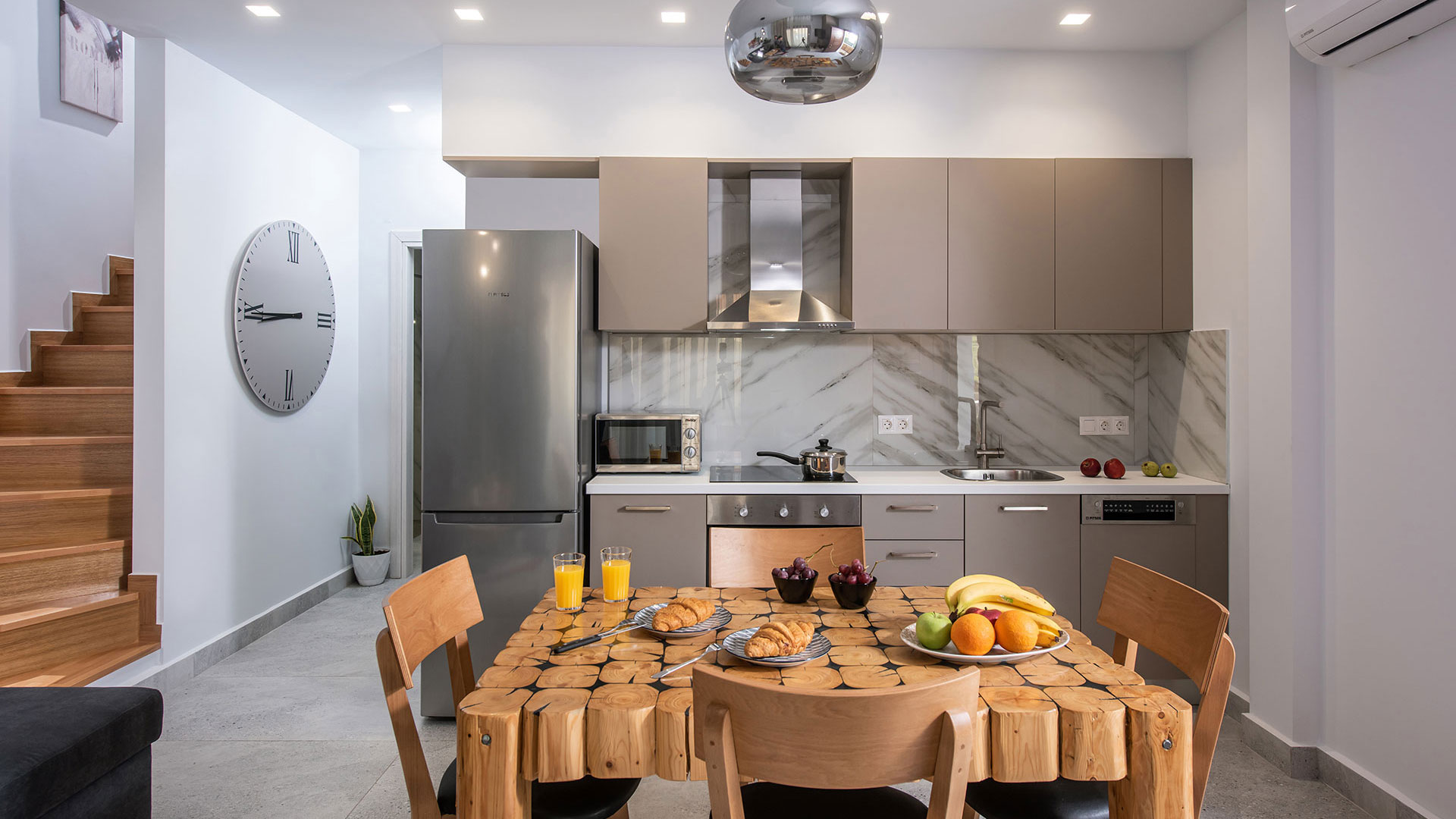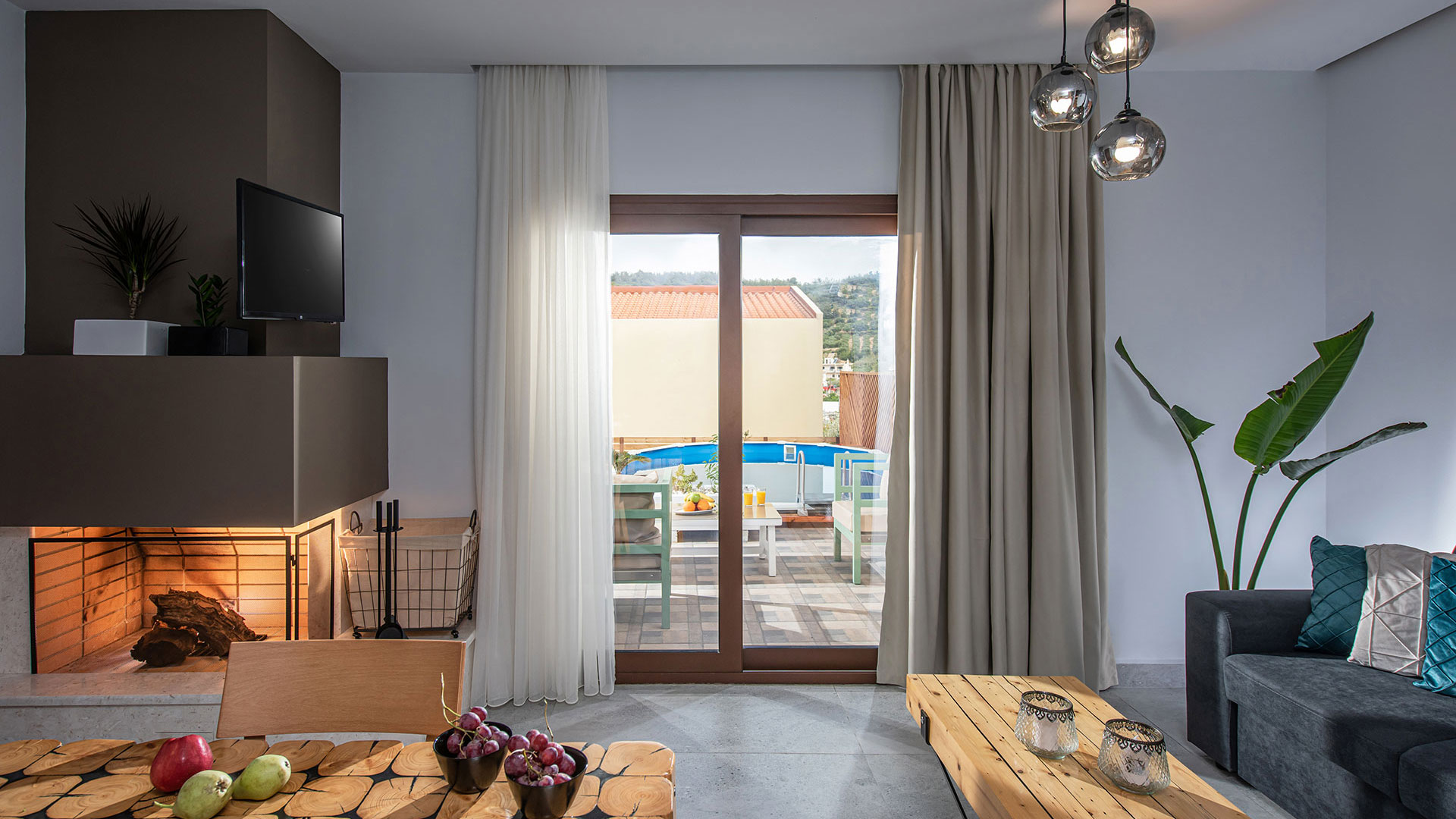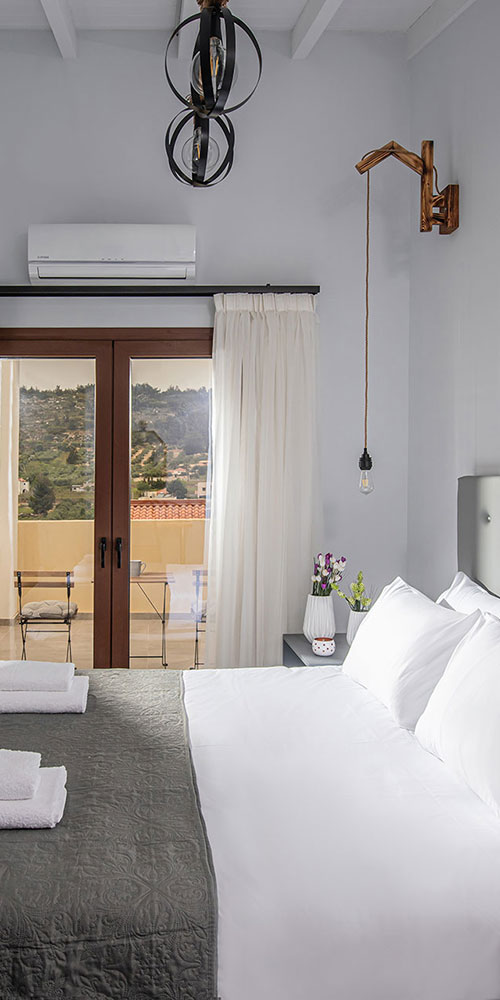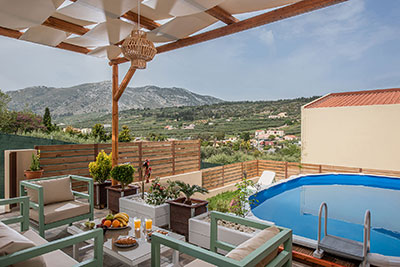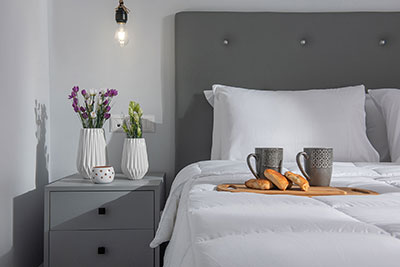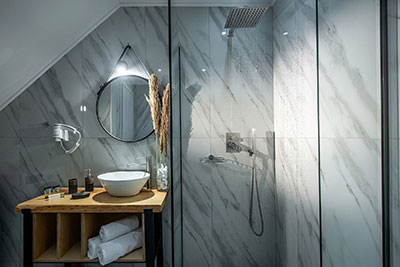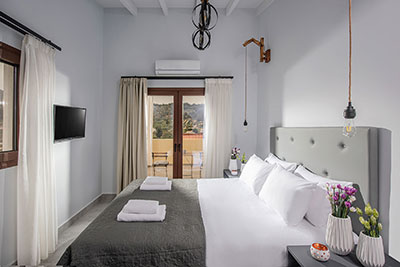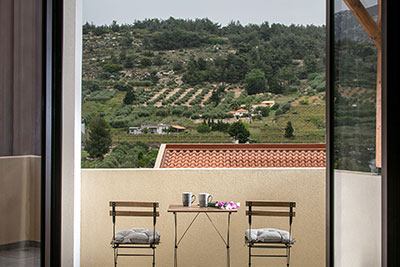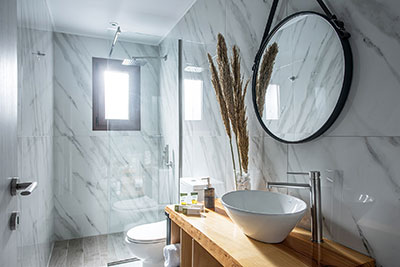Iris Villa Archanes 3
Villa Aspasia is a serene retreat where elegance meets comfort, designed to awaken every sense and elevate the art of island living.
Each detail has been thoughtfully curated to create an atmosphere of effortless sophistication, where modern aesthetics blend harmoniously with natural light. Special attention has been given to the lighting design, allowing every room to reveal its own distinct character from dawn to dusk.
Set across 70 sqm, the villa features two bedrooms — one with an en-suite bathroom — a fully equipped kitchen and inviting living areas that open up to an enchanting outdoor space. The seamless flow between interior and exterior enhances the sense of freedom and relaxation, offering guests the perfect balance between privacy and connection with nature.
Accommodating up to six guests, Villa Aspasia promises a stay defined by comfort, style and the genuine warmth of Cretan hospitality — an unforgettable experience where every moment feels naturally luxurious.
Iris Villa Archanes 3
Kato Archanes, Crete
Tel.: +30 2810 227000
welcome@enormehotels.com
DISTANCES & TRANSPORTATION
17,4 km
15,4 km
15,6 km
14,9 km
Accommodation
Living roomKitchen
Bathroom
1 x Bedroom with double bed on the Ground Floor
1 x Bedroom with double bed and en-suite bathroom on the first floor
Terrace
ample area for loungingGarden with Barbeque
Private swimming pool
Facilities
Internet Access - Wifi (Free)Toiletries
A / C
Fresh sheets and towels
Fully equipped kitchen
Hair dryer
Garage (Free)
Hangers
Washing Machine
Iron
Safe
Fridge
Freezer
Microwave
Oven
Toaster
Dishwasher
Coffee machine
Stove
Cutlery/Crockery
Kettle / Water Boiler
Blender
TV’s
Concierge Services *
Private TransferCar Rental
Grocery Shop
Massage & Spa
Sailing
Private Chef
Coiffure – Mani - Pedi
Personal Training - Yoga
Tour Guide – Excursions
* Services with extra charge.
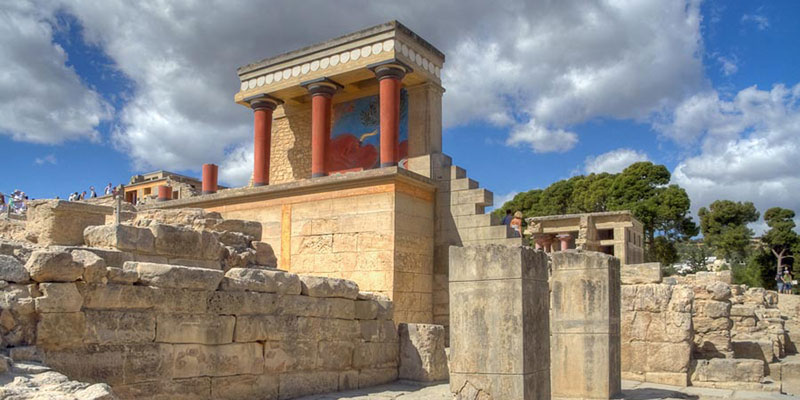
The Palace of Knossos, the largest archaeological site of the Bronze Age on Crete, is often described as Europe’s oldest city. Once the vibrant heart of the Minoan civilization, it served as both a ceremonial and administrative center, reflecting the sophistication and artistry of this remarkable culture.
Its intricate layout — a labyrinth of royal chambers, workshops, storerooms and courtyards — unfolds around a grand central court, embodying the complexity and harmony of Minoan architecture. The vivid frescoes that once adorned its walls, along with the elegant motifs found on pottery, seals, and artifacts, offer a fascinating glimpse into everyday life, beliefs, and rituals of the Minoans.
Today, the restored remains of Knossos continue to inspire awe, inviting visitors to walk through history and experience the legacy of one of the world’s most advanced ancient civilizations.
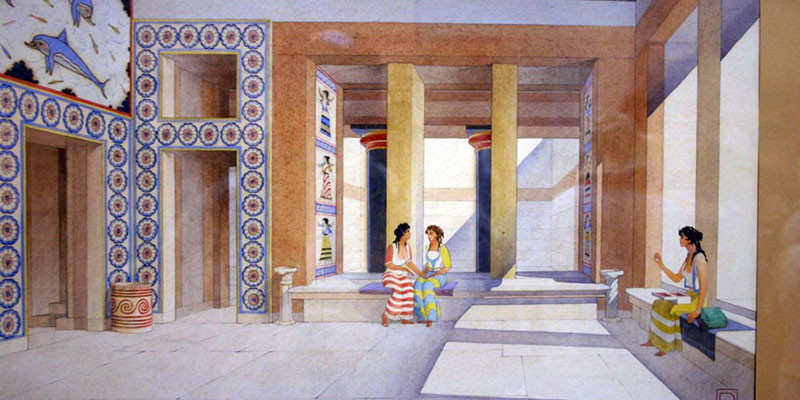
The Heraklion Archaeological Museum is one of the most significant museums in Greece and a landmark institution in Europe. It showcases an extraordinary collection that traces the island’s history across more than 5,500 years — from the Neolithic period to Roman times — offering visitors a comprehensive journey through Crete’s rich cultural heritage.
At its heart lies the world-renowned Minoan collection, featuring exquisite artifacts that capture the artistry and sophistication of Europe’s earliest civilization. Frescoes, pottery, jewelry and ceremonial objects reveal the creativity and technical mastery of the Minoans, many of which are considered true masterpieces of ancient art.
A visit to the Heraklion Archaeological Museum offers a fascinating insight into the island’s ancient past and the enduring legacy of Minoan civilization.
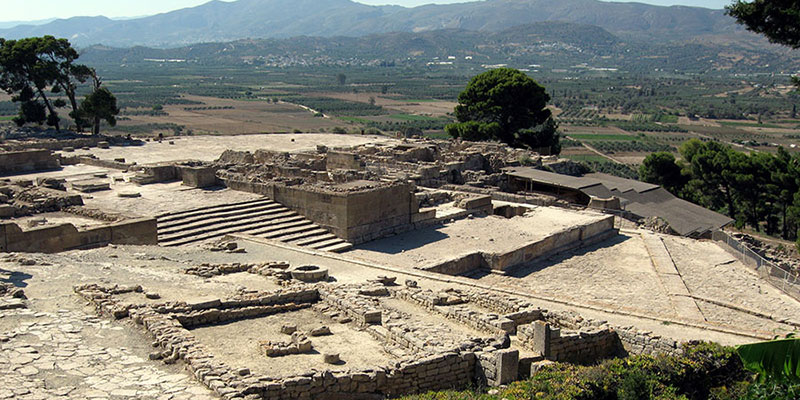
Phaistos was one of the major centers of the Minoan civilization and the most prominent city of southern Crete. Built on a low hill overlooking the fertile plain of Messara, it commanded a strategic position and flourished as a powerful and prosperous city-state.
The palace of Phaistos, second in importance only to Knossos, reflects the refined architecture, organization and artistry of the Minoan world. Its courtyards, storerooms, and ceremonial spaces reveal the advanced social and economic structure of the time, while the site’s serene setting offers a captivating view of the Cretan landscape.
Phaistos invites visitors to explore one of Crete’s most impressive archaeological sites and to discover the artistry of the Minoan civilization.
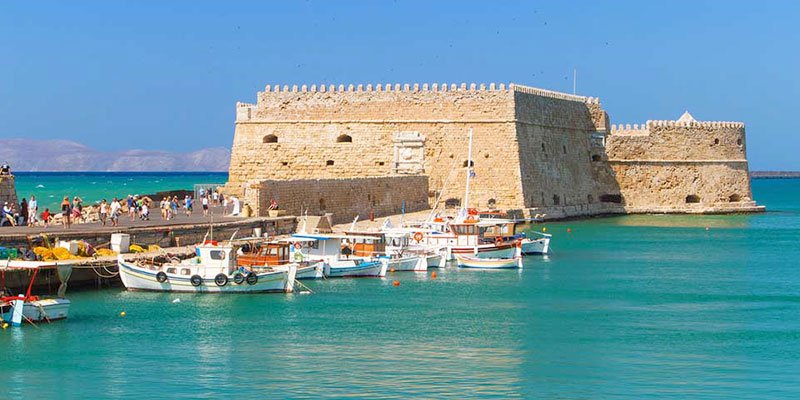
Guarding the entrance of Heraklion’s old port, the Koules Fortress — known in Venetian times as Castello a Mare — is one of the city’s most iconic landmarks. Built by the Republic of Venice in the early 16th century, it replaced an earlier Byzantine tower and was designed to protect the harbor and the city of Candia (as Heraklion was then called).
To create the foundation for the fort, Venetian engineers sank old ships filled with stone, forming a solid platform on which the impressive structure was raised. Completed around 1540, the fortress was heavily armed with dozens of cannons and stood as a powerful maritime stronghold for more than a century.
During the long Siege of Candia, the Ottomans captured the fort in 1669 and later made minor additions, including new battlements. In modern times, the restored fortress has become a cultural venue, hosting art exhibitions and events, while offering visitors panoramic views of the sea and the city’s historic harbor.
A visit to Koules connects you with Heraklion’s maritime past and its enduring spirit.

Spinalonga is a small, rocky islet at the mouth of Elounda Bay, in the region of Lasithi. Covering an area of just 8.5 hectares, it stands as a striking landmark of Crete’s northern coast. Its strategic position led to its fortification over the centuries, serving various purposes — from a Venetian stronghold to an Ottoman refuge.
In the early 20th century, Spinalonga became known as the island of the lepers, where patients from Crete and across Greece lived in isolation until 1957. Within its stone walls unfolded stories of hardship and resilience, but also of human connection and hope — a poignant chapter in the island’s long and complex history.
Today, Spinalonga stands as a place of remembrance and reflection, inviting visitors to wander its sunlit paths and admire its breathtaking views.
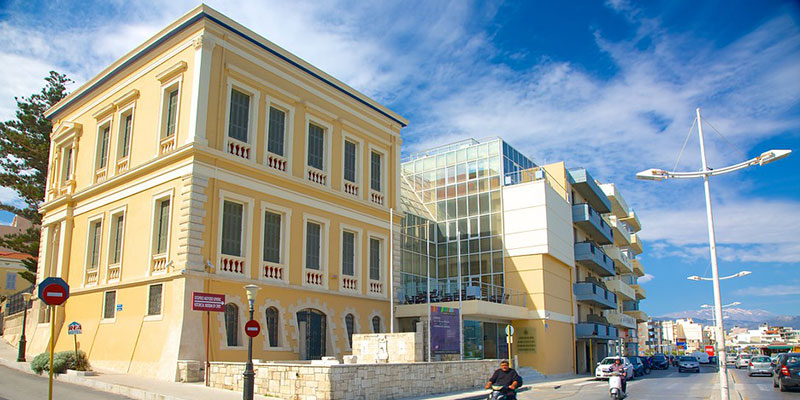
Founded in 1953 and located on Heraklion’s coastal avenue, the Historical Museum of Crete is housed in a neoclassical building of exceptional architectural merit. The museum chronicles seventeen centuries of Cretan history, from the early Christian era to the present day, offering visitors a comprehensive view of the island’s cultural heritage.
Across its 22 exhibition halls, guests can explore Byzantine art and artifacts, the periods of Venetian and Ottoman rule, the island’s union with Greece, World War II relics including items from the Battle of Crete, and the traditions of local agricultural life. Modern multimedia presentations enrich the experience, bringing Cretan folk culture and daily life vividly to life.
A highlight of the museum is the collection dedicated to Nikos Kazantzakis, the renowned Cretan author, featuring personal objects and manuscripts that reflect his worldwide influence. Additionally, the museum houses two of the finest paintings by El Greco (Dominikos Theotokopoulos) remaining in Crete: The Baptism of Christ (1567) and The View of Mount Sinai (1570), masterpieces that showcase the artist’s fusion of Italian Renaissance and Byzantine styles.
Τhe Historical Museum of Crete invites visitors to journey through the island’s rich past, offering a deeper understanding of its art, culture, and heritage, while inspiring a lasting connection to Crete’s timeless spirit.
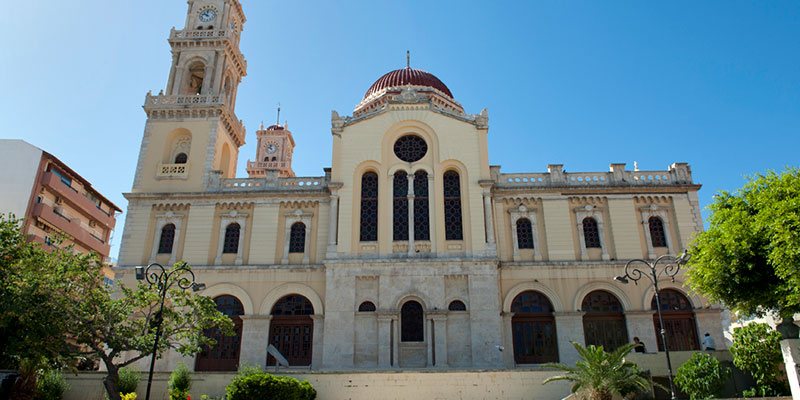
St. Minas is the patron saint of Heraklion, and his feast day on November 11 is celebrated as a city holiday. Numerous legends recount his protection of the city, from Ottoman attacks to the German bombardments of 1941. A bomb displayed next to the Cathedral of St. Minas, on the staircase leading to the plateau of St. Catherine, serves as a striking reminder: it fell here during the 1941 raids but never exploded. Another legend tells of a monk who received a vision of St. Minas, revealing the site where his cathedral should be built.
The famous Cretan writer Nikos Kazantzakis also pays tribute to the saint in his novel Captain Michalis (UK title Freedom and Death), describing how St. Minas watches over the city:
“At midnight, when the town is in deep sleep, St. Minas descends from his icon and sets off for the quays, crossing through the neighborhoods of the Greeks; when a door he finds open, he locks it; when a Christian he finds ill and sees light at his window, he stands, pleading to God to heal him.”
The Cathedral of St. Minas, one of the largest in Greece, was constructed in the mid-19th century. Work was interrupted during the 1866 Cretan Revolution and resumed in 1883, reaching completion in 1895. Adjacent to the cathedral stands the small temple of St. Minas, adding to the spiritual and historical significance of this remarkable site.
Today, the Cathedral and its surroundings invite visitors to explore Heraklion’s rich history and heritage, experiencing both the legends and the enduring presence of St. Minas in the life of the city.
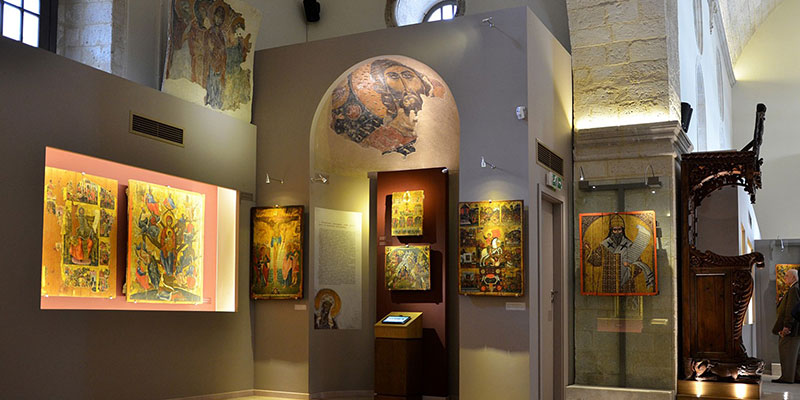
St. Catherine, the church of the Sinaite Monastery, now operates as the Museum of Byzantine Icons and Christian Art. Situated northeast of the Cathedral of St. Minas, this cruciform basilica was established during the Second Byzantine period and, from the 15th century onwards, served as a school specializing in grammar, logic, rhetoric, mathematics, art and music.
Following the Ottoman conquest after 1669, the building was converted into a mosque, known as Zulficar Ali Pasha Mosque, and remained in use until 1922, when the last Muslim residents departed Heraklion as part of the population exchange between Greece and Turkey. The architecture of the church reflects Venetian influences, a result of the island’s Venetian occupation from the 16th century onward.
The museum’s collections focus on ecclesiastical art developed in Crete from the 15th to the 19th century. Highlights include icons by renowned masters of the Cretan School, such as Angelos Akotantos (15th century) and Michael Damaskinos (16th century), as well as works from the environment that shaped El Greco, one of the most celebrated painters in the world. Visitors can explore murals, stone sculptures, wood carvings, post-Byzantine metalwork, miniature artifacts, coins, devotional objects, holy vestments, embroidery, manuscripts, and books — all exceptionally preserved and thoughtfully presented throughout the museum.
The Museum of Christian Art invites visitors to discover Crete’s rich religious and artistic heritage, offering a journey through centuries of creativity and devotion.

The Natural History Museum of Crete, operating under the auspices of the University of Crete, is a modern institution dedicated to the study and presentation of the island’s unique natural environment. The museum maintains and develops extensive collections, conducts scientific research, and contributes to education at all levels, from primary schools to university programs.
Through its exhibitions, visitors can explore the rich biodiversity, geology, and ecosystems of Crete and the wider Mediterranean region. The museum showcases endemic species, fossils, minerals, and interactive displays that illustrate the intricate balance of nature on the island. Special emphasis is placed on conservation and environmental awareness, making it not only a center of learning but also a space to inspire curiosity and appreciation for the natural world.
Τhe Natural History Museum of Crete offers an engaging journey for all ages, revealing the remarkable natural heritage of Crete.
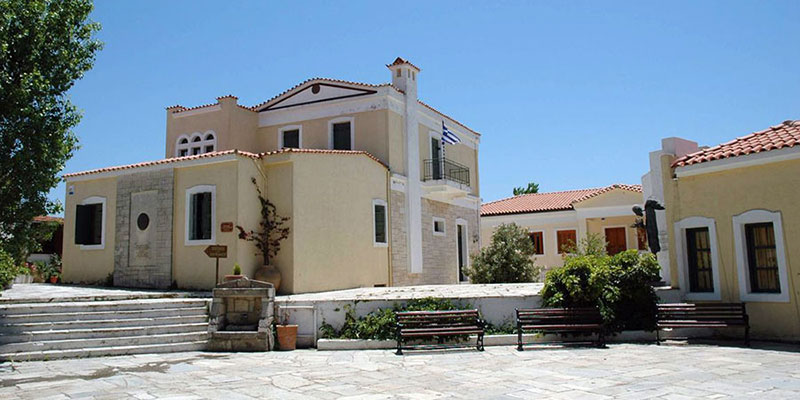
The Nikos Kazantzakis Museum celebrates the life and legacy of one of Greece’s most influential intellectuals — author, thinker, philosopher, politician, and traveler Nikos Kazantzakis. Situated in the historic village of Varvari, now known as Myrtia, near Heraklion, the museum comprises a cluster of traditional buildings that house the personal archives of the writer.
Visitors can explore manuscripts and notes, samples of his correspondence with leading thinkers, politicians and authors of his time, first editions of his works in Greek and other languages, rare photographs, and other personal artifacts that illuminate the breadth of his extraordinary life.
A visit to the museum also offers the perfect opportunity to discover the charm of the village of Myrtia. Its picturesque streets and traditional tavernas make it an ideal setting for a leisurely excursion, where one can combine cultural exploration with a delightful Cretan lunch.
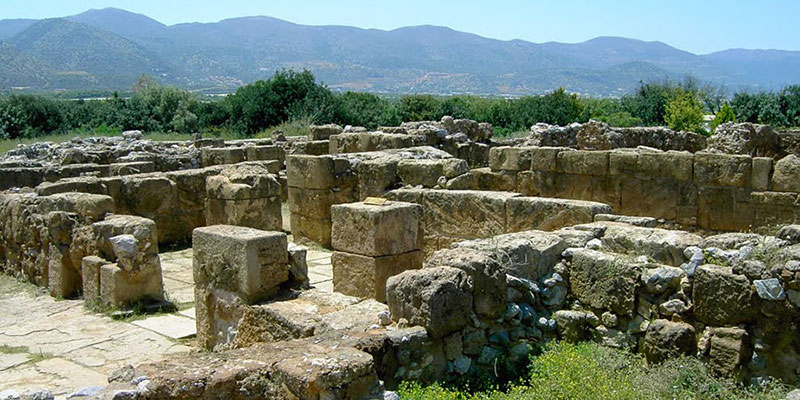
The Palace of Malia is one of the ancient Minoan palaces that testify to the grandeur of the civilization that flourished in Crete. Located approximately 3 km (2 miles) east of the modern city of Malia, the site has been extensively excavated by the French School of Archaeology since the early 1920s.
Remarkably well-preserved, the palace offers a clear view of Minoan architecture and urban planning. Abandoned at the end of the 2nd millennium BC and never reused, the site remains free from later constructions, allowing visitors to experience its layout and features without distraction.
Today, Malia invites visitors to walk through the remains of the palace and immerse themselves in the daily life and achievements of one of Crete’s most remarkable ancient civilizations.

Cretaquarium – Thalassokosmos, located in Gournes just a short 15-minute drive from Heraklion, offers a captivating journey into the Mediterranean marine world. As one of the largest and most modern aquariums in Europe, it presents over 1,200 aquatic species and thousands of living organisms, providing an unparalleled opportunity to explore the diversity of life beneath the sea.
Visitors can observe the fascinating behaviors of marine creatures and discover the astonishing variety of shapes, colors, and habits that define their underwater world. Thoughtfully designed exhibits allow guests to learn about the ecosystems of the Mediterranean, understand the delicate balance of marine life, and reflect on our shared responsibility for the conservation of the seas.
A visit to Cretaquarium is not only an engaging and educational experience but also an inspiring reminder of the beauty, complexity, and fragility of the Mediterranean’s underwater heritage.

The Crete Golf Club is the island’s only 18-hole championship golf course and one of the most remarkable courses in the Mediterranean. Designed by architect Bob Hunt, a member of the English PGA, the course meets international PGA standards and offers a challenging yet enjoyable experience for golfers of all levels throughout the year.
Each hole has been thoughtfully integrated into the natural landscape, harmonizing with Crete’s mountains and coastline. Players and visitors alike can enjoy panoramic views of the Aegean Sea and the island’s rugged terrain, making every round not only a test of skill but also a visual and sensory delight.
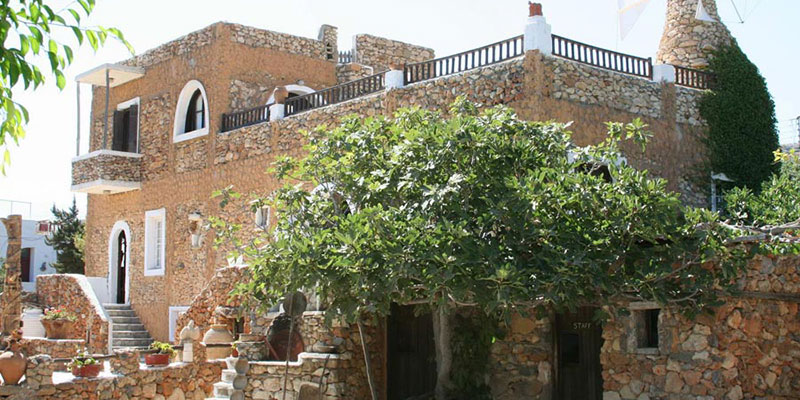
The Cretan Open-Air Museum “Lychnostatis” is dedicated to preserving and promoting the rich folk cultural heritage of Crete. Its extensive collections explore Cretan folk traditions, ethnology, local nature, and the island’s unique cultural practices.
Situated in Hersonissos, one of Crete’s main tourist areas, Lychnostatis is more than a museum — it is a living celebration of the island’s traditions, offering visitors an immersive experience of Cretan life, past and present. Through its exhibits and interactive displays, guests can discover traditional crafts, music, costumes and the natural environment, gaining insight into the customs and daily life that have shaped Cretan society over centuries.
Lychnostatis stands as both a valuable cultural attraction and an exemplary initiative in safeguarding Crete’s heritage, inspiring appreciation for the island’s traditions, culture and environment.
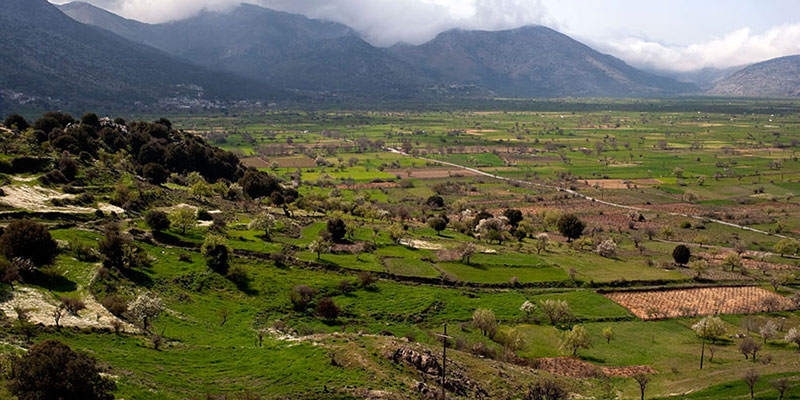
Lassithi Plateau is a stunning valley nestled among the mountains of eastern Crete, renowned for its iconic windmills. In the 1950s and 1960s, the plateau became one of Europe’s first wind-powered agricultural systems, with thousands of windmills pumping groundwater to irrigate the fertile fields below.
The 18 villages of the plateau are built at the foot of the surrounding mountains, leaving the plain open for cultivation. They are connected by a 23 km circular road, offering visitors the chance to explore traditional villages, local farms, and scenic landscapes.
Lassithi Plateau invites travelers to experience the harmony of Cretan life with nature, where history, culture and breathtaking scenery converge in one unforgettable setting.
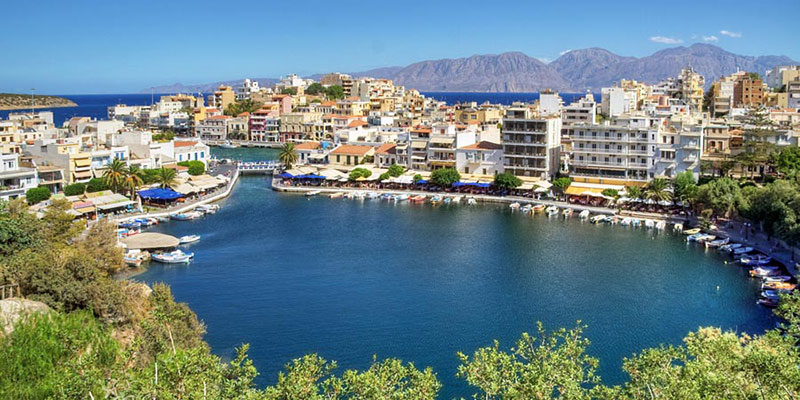
Agios Nikolaos is a cosmopolitan and vibrant resort that welcomes thousands of visitors each year. The city is famous for its picturesque lake, which, according to legend, was once a bathing place for the goddesses Athena and Artemis.
The lake is connected to the sea by a narrow channel, creating a unique and captivating landscape where red rock formations and lush greenery frame the water. Its natural beauty, combined with the charm of the town’s streets, boutiques and cafes, makes Agios Nikolaos a destination that blends culture, history and leisure.
Visitors can enjoy a stroll along the lakeside, admire the surrounding scenery, and experience the cosmopolitan yet authentic atmosphere that has made Agios Nikolaos one of Crete’s most beloved resorts.
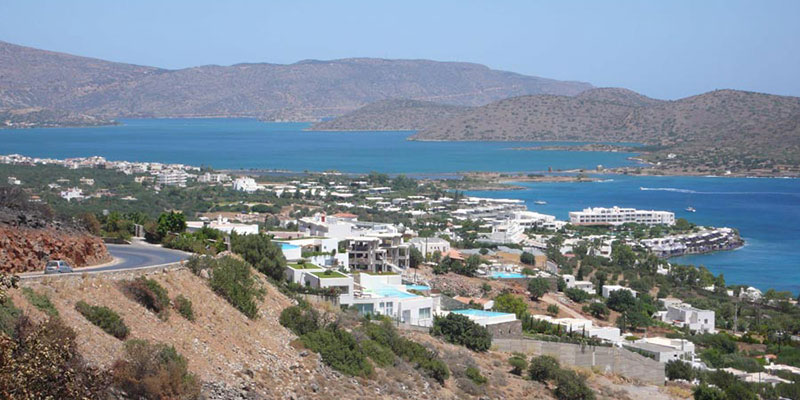
Elounda, a world-renowned tourist destination located north of Agios Nikolaos, is celebrated for its indented coastline, shaded beaches, crystal-clear waters and serene natural surroundings. The drive from Agios Nikolaos to Elounda spans approximately 10 km, following the shore and gently ascending a small mountain.
From the summit, visitors are rewarded with breathtaking panoramic views of Mirabello Bay, stretching all the way to the eastern tip of Crete on clear days. The combination of tranquil beaches, picturesque landscapes and a peaceful atmosphere makes Elounda an ideal destination for relaxation, exploration, and unforgettable seaside experiences.
Elounda invites travelers to immerse themselves in its natural beauty and peaceful charm, creating memories that blend the allure of the Cretan coast with a sense of timeless serenity.
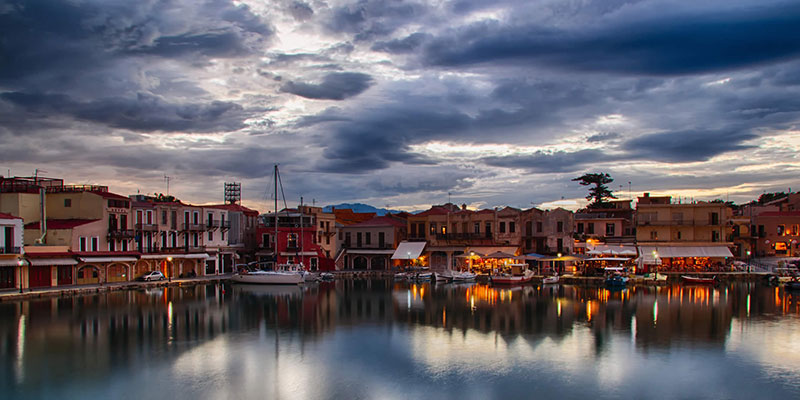
The city of Rethymnon is a gem of Crete, blessed with natural beauty, nestled between breathtaking mountains and the deep blue of the Mediterranean. Its streets are adorned with historic Venetian and Ottoman architecture, vibrant colors, and charming traditional buildings, while its inhabitants are renowned for their warmth, hospitality and dedication to preserving local traditions.
Rethymnon captivates visitors at first sight. From the moment one steps into the city, its lively atmosphere, cultural richness and scenic surroundings create an immediate sense of welcome, inviting guests to explore, relax and feel at home.
Rethymnon offers a harmonious blend of history, culture and natural beauty, making it a destination that leaves a lasting impression and a desire to return.
